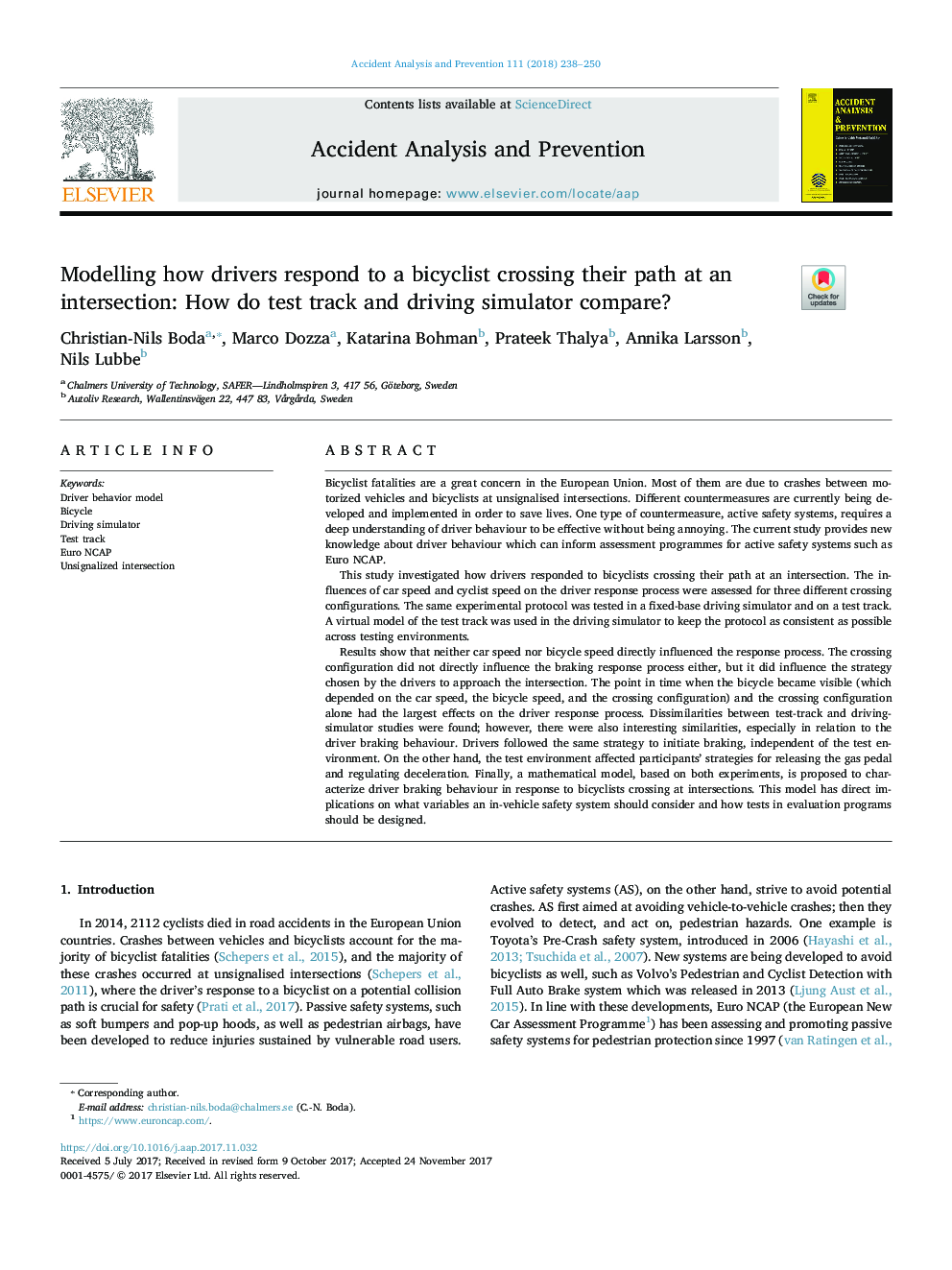| Article ID | Journal | Published Year | Pages | File Type |
|---|---|---|---|---|
| 6965267 | Accident Analysis & Prevention | 2018 | 13 Pages |
Abstract
Results show that neither car speed nor bicycle speed directly influenced the response process. The crossing configuration did not directly influence the braking response process either, but it did influence the strategy chosen by the drivers to approach the intersection. The point in time when the bicycle became visible (which depended on the car speed, the bicycle speed, and the crossing configuration) and the crossing configuration alone had the largest effects on the driver response process. Dissimilarities between test-track and driving-simulator studies were found; however, there were also interesting similarities, especially in relation to the driver braking behaviour. Drivers followed the same strategy to initiate braking, independent of the test environment. On the other hand, the test environment affected participants' strategies for releasing the gas pedal and regulating deceleration. Finally, a mathematical model, based on both experiments, is proposed to characterize driver braking behaviour in response to bicyclists crossing at intersections. This model has direct implications on what variables an in-vehicle safety system should consider and how tests in evaluation programs should be designed.
Related Topics
Physical Sciences and Engineering
Chemical Engineering
Chemical Health and Safety
Authors
Christian-Nils Boda, Marco Dozza, Katarina Bohman, Prateek Thalya, Annika Larsson, Nils Lubbe,
